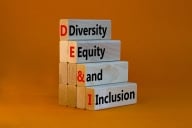You have /5 articles left.
Sign up for a free account or log in.

Pekic/E+/Getty Images
Consider the following scenario that frequently occurs in math classes throughout higher education. On the first day of class, a math professor announces to students, “If you don’t know this, this and this, then you may as well leave, because you are not going to pass this course.” Five students collect their things and leave.
Who left? The students who doubted whether they belonged in the college classroom anyway. They might be women; Black, Indigenous or people of color (BIPOC) students; formerly incarcerated students; students with disabilities; or first-generation college students. They are students from groups who are underrepresented among those with STEM careers and four-year degrees.
At first glance, it appears that the instructor in that scenario holds all students to high standards. But the fact is that, because of their elitism, they only hold some students to high standards. The five students who collect their things and leave were told that they did not belong. They never had the opportunity to meet the high standards set by the math instructor. Such elitism contributes to inequitable student outcomes in math.
In a totally different scenario, however, another math professor announces to students on the first day of class, “If you don’t know this, this and this, it will take more time and effort to excel in this class. Do not compare yourself to other students who have come to this class already with these skills and knowledge. Instead,” this professor advises, “access these five resources to help you fill in these gaps in knowledge and succeed in this class: 1) get tutoring at the tutoring center weekly, 2) come to my office hours, 3) review your notes immediately after class, 4) read sections of the text before class to prelearn the material and 5) watch videos from this video bank before and/or after each class to prelearn and/or relearn the material.”
The instructor in this second scenario holds all students to high standards and offers strategies that students can leverage to achieve those high standards. Rather than practicing elitism, instructors can use instructional moves and feedback to communicate that every student belongs. And students who feel like they belong in college stay in college.
After teaching math for more than 30 years at community colleges, comprehensive universities and research universities on both coasts in the United States, I have witnessed elitism and exclusion at all levels of higher education. In community colleges, elitism manifests in the singular focus on bolstering the success of students primarily on the STEM pathway, even though the majority of students do not follow that pathway.
I have heard one community college instructor say about another, “They only have a large majority of their students remaining at the end of the semester because they watered down the curriculum,” instead of celebrating that the instructor used inclusive, equitable pedagogical approaches to support student retention and success. I have heard another instructor state, “I am not going to accommodate students with learning disabilities, because I will not lower my standards.” And at both community colleges and universities, it is common to hear, “Our remedial courses run like a well-oiled machine, and we will not change that,” even though research indicates that BIPOC, first-gen and low-income students disproportionately languish in remedial math courses.
One university professor told students, “Forget everything you learned and do it my way.” It is as if they are saying, “I am the authority and hold supreme power over your learning … and we will just forget about years of educational research indicating the value of active, social learning and tapping into prior knowledge.” These elitist attitudes harm students, particularly those who are underrepresented in higher ed and STEM careers.
This happens in top research universities, too. You may recall the public attack by math professors at Stanford University and the University of California, Los Angeles, against Jo Boaler, also a Stanford professor—who had challenged the outdated approaches championed by the other professors. When I was Boaler’s research assistant from 2011 to 2016, I witnessed the damage caused by this campaign of hate and vilification. These elitist professors could not accept that Boaler’s approach did not lower standards but instead improved student outcomes. Boaler’s story is only one example of how rigid, exclusive, elitist math department cultures harm not only students but colleagues, too.
There is a familiar saying—“Teach the students you have and not the students you want.” We must remember that professors are the providers of a paid service and students are the consumers who pay for that service. We should not be seeking the perfect students who can make our teaching experience agreeable for us. Instead we should be laboring to figure out how to transform our teaching so we deliver high-quality, inclusive instruction that serves every student.
10 Steps for Countering Elitism
We can put the brakes on elitism in math department cultures and instead send the message to all students that they belong in our classrooms. Countering elitism is part of diversity, equity, inclusion and accessibility (DEIA) work. I suggest 10 steps both faculty members and institutions should consider to change elitist cultures and communicate that every student belongs.
- In department meetings, don’t be a silent enabler of elitism. Call out math colleagues who act in an elitist or exclusive manner. Start each meeting with DEIA goals.
- Stop saying things like, “Students do not belong in this calculus class,” as I heard at a world-class research institution. Discourse around blaming students leads to lack of agency among teachers. When instructors change their attitudes and discourse to take more responsibility for student success, all students do better—especially underrepresented students.
- Prioritize the success of students not pursuing STEM majors. Focus on the quality of the curriculum, text adoption and instruction of non-STEM-track math courses.
- Adopt faculty hiring strategies that prioritize candidates who emphasize inclusive instruction and not elitism. At community colleges, select candidates who have teaching expertise in diverse settings rather than those who possess a Ph.D. in math. Student-centered practices mean hiring instructional experts for non-STEM courses, too.
- Implement corequisite courses with transfer-level courses. Or adopt an innovative remedial math curriculum to address the range in preparedness of incoming students.
- Offer a cohort model. For example, a course I teach for the Fall Program for First Semester at the University of California, Berkeley, has social justice themes, smaller classes, wraparound support services and individualized instruction for incoming students.
- Assign insightful readings about how math instruction can be oppressive and require students to post their thoughts about it on a discussion board. It will inform the professor’s point of view, too.
- Assign readings about mathematicians from underrepresented groups. Include, for example, those who have disabilities, are from the LGBTQ+ community, are BIPOC or have struggled in math. Have students post comments about how they inspire them and relate to their identities.
- Assign social justice math problems that build on students’ lived experiences. For example, students in my stats-prep course created or modified data sets that were skewed. A woman who identified as Mexican created a data set of the ages of all her family on either side of the border to feel closer to them.
- Most important, welcome the students you have and find ways to support their success. Colleges do not exist to provide math professors with the perfect teaching experience but to provide universal access to high-quality math instruction to every student.








